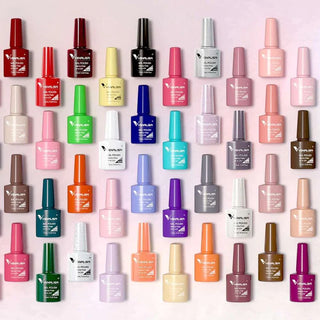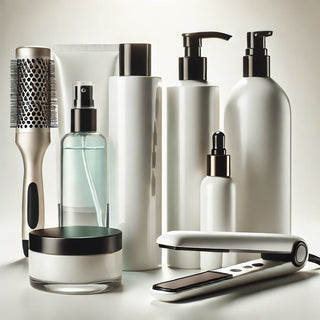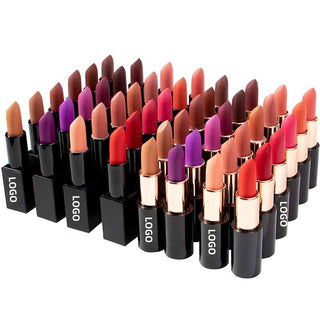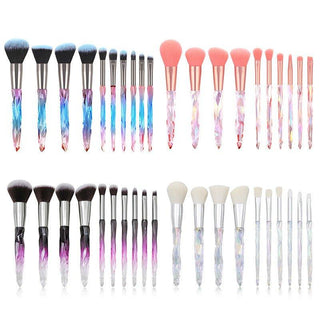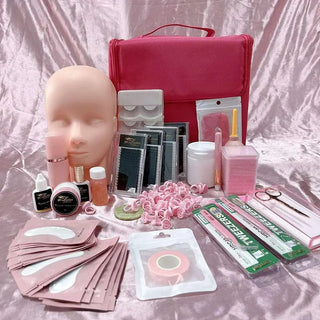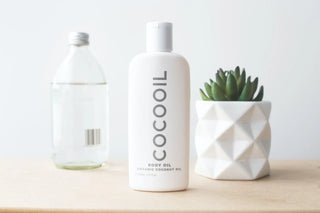Is Carmex bad for you? I know I’ve seen people swear it’s the best lip balm ever, and others say it just makes your lips worse. I dug into what’s actually in Carmex, checked out the studies, and talked to some experts. By the end, you’ll have a clearer idea whether reaching for that little pot every day is a good move or not.
Key Takeaways
- Carmex packs menthol and camphor for that cooling tingle, but too much can irritate sensitive lips.
- Phenol in the formula fights minor infections, yet it’s best used in moderation to avoid dryness.
- There’s no true chemical addiction, but the soothing feeling can turn into a habit of constant reapplication.
- Watch for signs of irritation or an allergic reaction, and adjust how often you use it based on your lips’ needs.
- If Carmex feels too strong, you can try petroleum-free balms, natural oils, or see a dermatologist for custom advice.
Unpacking The Question: Is Carmex Bad For You
Understanding Lip Balm Safety
Lip balm, a staple in many pockets and purses, is meant to soothe and protect our lips. But with so many options available, it's easy to wonder about the safety of what we're applying. The primary goal of any lip balm should be to hydrate and create a protective barrier. We need to consider things like ingredients, potential allergens, and how our skin reacts over time. It's not just about immediate relief; it's about long-term lip health.
Tracing Origins Of Skepticism
Why do some people think Carmex is bad? The skepticism often stems from a few key areas:
- Ingredient lists that include things like camphor and menthol, which can be irritating to some.
- The feeling of needing to constantly reapply, leading to worries about "addiction."
- Concerns about long-term effects of certain ingredients.
It's important to remember that everyone's skin is different. What works wonders for one person might cause problems for another. A lot of the negative press comes from individual experiences and sensitivities, not necessarily from broad scientific studies.
Interpreting Safety Research
Safety research on lip balms, including Carmex, can be a bit tricky to interpret. Here's why:
- Studies often focus on specific ingredients, not the entire product.
- Research can be funded by the companies themselves, potentially leading to bias.
- Individual reactions vary widely, making it hard to draw definitive conclusions.
To make sense of it all, it's best to look for independent studies and pay attention to the methodology. Are the sample sizes large enough? Are the results statistically significant? And most importantly, how do the findings relate to your own experience?
Exploring Key Components In Carmex Formulation

Carmex is known for its distinctive feel and effectiveness, but what exactly is in it? Let's break down some of the key ingredients and what they do.
Menthol And Camphor For Cooling Relief
Menthol and camphor are what give Carmex that signature tingle. They work by creating a cooling sensation, which can help to relieve pain and itching associated with chapped lips. However, it's worth noting that some people might find these ingredients irritating, especially if they have sensitive skin. It's a bit of a balancing act – the cooling can feel great, but it's not for everyone.
Phenol’s Antiseptic Properties
Phenol acts as a mild antiseptic in Carmex. It's there to help prevent infection if your lips are cracked or broken. It also has some mild exfoliant and anesthetic properties. While it can be helpful, there are some concerns about its safety with prolonged use. The Environmental Working Group (EWG) considers it a low to moderate hazard, so moderation is key.
Petrolatum As A Moisture Barrier
Petrolatum, also known as petroleum jelly, is a major component of Carmex. It creates a barrier on your lips, locking in moisture and preventing them from drying out. The FDA considers petrolatum safe for use in cosmetics, and it's widely regarded as an effective moisturizing agent. Some people find it a bit heavy or greasy, but it's hard to argue with its ability to keep lips hydrated.
Role Of Natural Emollients
Carmex also includes natural emollients like cocoa butter and lanolin. These ingredients help to soften and moisturize the lips. They're generally well-tolerated, but it's worth noting that some people can be allergic to lanolin (which comes from wool) or cocoa butter. If you have sensitive skin, it's always a good idea to do a patch test before using a product with these ingredients.
It's important to remember that everyone's skin is different. What works well for one person might not work for another. Pay attention to how your lips react to Carmex and adjust your usage accordingly. If you experience any irritation, stop using the product and consider trying a different lip balm.
Debunking The Myth Of Lip Balm Addiction

Distinguishing Habit From Dependency
Okay, let's talk about this whole "Carmex addiction" thing. Is it real? Not really. It's more of a habit than a true addiction. Think about it: you're not going through withdrawal if you don't use it, right? It's the constant need to reapply that makes it feel like you can't live without it. That feeling is driven more by the experience of relief than a physical need.
Why Carmex Feels Compelling
So, why do we reach for Carmex so often? It's the ingredients. Menthol and camphor create that cooling, soothing sensation. When your lips are dry and cracked, that feeling is amazing! It's a quick fix, a little moment of comfort. But here's the thing: those ingredients can also be a bit irritating for some people. That initial relief can be followed by more dryness, which leads to... you guessed it, more Carmex. It's a cycle.
Breaking The Reapplication Cycle
Alright, so you feel like you're reapplying Carmex every five minutes. How do you break free? Here are a few ideas:
- Hydrate from within: Drink more water! Seriously, dehydration makes dry lips worse.
- Switch it up: Try a balm with simpler ingredients, like beeswax or shea butter. Less potential for irritation.
- Exfoliate gently: Use a soft toothbrush to remove dead skin. This helps your balm absorb better.
It's all about finding a balance. Carmex isn't evil, but constant use might not be the best thing for your lips. Pay attention to how your lips feel, and adjust your routine accordingly. Sometimes, less is more.
Balancing Benefits And Potential Risks
Carmex, like most things, isn't all sunshine and roses. It has some good points, but also some potential downsides you should know about. It's about weighing those things to see if it's right for you.
Potential For Irritation And Dryness
Okay, so here's the deal: some people find that Carmex actually dries their lips out after the initial soothing feeling wears off. This is often blamed on ingredients like camphor and menthol, which, while providing that cooling sensation, can be irritating to sensitive skin. It's a bit of a paradox – you're using it to fix dryness, but it might be making it worse in the long run.
Allergic Reaction Triggers
Allergies are always a possibility with any product. Carmex contains several ingredients that could potentially trigger a reaction in some people. Common culprits include lanolin, fragrances, and certain preservatives. If you notice redness, itching, swelling, or any other unusual symptoms after using Carmex, stop using it immediately and maybe talk to a doctor.
Expert Guidelines For Daily Use
So, how much is too much? Experts generally recommend using lip balm sparingly. Applying it too often can prevent your lips from naturally producing their own moisture, leading to a cycle of dependence. Think of it like this:
- Apply only when your lips feel dry or chapped.
- Use a thin layer – you don't need to slather it on.
- Avoid using it right before going to bed, as it can trap moisture and potentially irritate your lips overnight.
It's all about finding a balance. Carmex can be a helpful tool for managing dry lips, but it's not a magic bullet. Pay attention to how your lips feel and adjust your usage accordingly. If you're constantly reaching for it, it might be time to re-evaluate your lip care routine.
Choosing Alternatives For Delicate Lips
Sometimes, Carmex just isn't the right fit. Maybe your lips are super sensitive, or you're looking for something more natural. Whatever the reason, there are plenty of other options out there to keep your pout happy and healthy.
Petroleum Free Moisturizing Options
If you're trying to avoid petroleum-based products, you're in luck! There's a whole world of lip balms that use plant-derived ingredients instead. These balms often rely on natural waxes and butters to create a protective barrier and lock in moisture.
- Beeswax balms are a classic choice, offering a firm texture and long-lasting hydration.
- Candelilla wax is a vegan alternative that provides a similar level of protection.
- Soy wax is another option, often combined with other moisturizing ingredients.
Oils And Butters For Deep Hydration
For intense moisture, look no further than natural oils and butters. These ingredients are packed with fatty acids and vitamins that can nourish and repair dry, chapped lips. They absorb well and leave your lips feeling soft and supple.
- Shea butter is a popular choice, known for its rich, creamy texture and ability to soothe irritation.
- Coconut oil is another great option, offering a light, non-greasy feel and a pleasant scent.
- Jojoba oil is similar to the skin's natural sebum, making it easily absorbed and highly effective.
When To Seek Professional Advice
Most of the time, dry lips are just a minor annoyance that can be easily treated with a good lip balm. But sometimes, persistent dryness, cracking, or irritation can be a sign of something more serious. If you've tried different lip care products and your lips aren't improving, it might be time to see a dermatologist.
It's important to pay attention to any unusual symptoms, such as excessive peeling, bleeding, or the formation of sores. These could indicate an underlying condition that requires medical attention. A dermatologist can help you identify the cause of your lip problems and recommend the best course of treatment.
Considering Environmental And Ethical Impacts
Sustainability Of Petroleum Derivatives
Okay, so Carmex uses petrolatum, which comes from petroleum. That's just a fact. The big question is, how sustainable is that? Petroleum is a non-renewable resource, and its extraction and processing can have some pretty serious environmental consequences. Think oil spills, habitat destruction, and greenhouse gas emissions. It's not great. There are definitely concerns about the long-term impact of relying on petroleum-based products, and that includes our lip balm.
Vegan And Cruelty Free Formulas
For some people, it's not just about the environment; it's about the animals too. Carmex isn't vegan, and it's not cruelty-free. That means it probably contains animal-derived ingredients (like beeswax), and it's likely tested on animals at some point in the production process. If you're trying to live a vegan or cruelty-free lifestyle, Carmex is probably not going to be your go-to lip balm. There are tons of other options out there that are both vegan and cruelty-free, so you don't have to compromise your values to keep your lips moisturized.
Eco Friendly Packaging Practices
Let's talk about packaging. Carmex usually comes in those little jars or tubes, and honestly, they're not the most eco-friendly things in the world. Most of the time, they're made of plastic, which can take hundreds of years to decompose. Plus, they're often small and fiddly, which means they're more likely to end up in landfills. Some companies are starting to use more sustainable packaging, like recycled plastic or biodegradable materials, but Carmex hasn't really jumped on that bandwagon yet. It's something to think about if you're trying to reduce your environmental footprint.
It's important to remember that even small choices, like what lip balm we use, can add up and make a difference. By being aware of the environmental and ethical impacts of our products, we can make more informed decisions and support companies that are working to do better.
Maximizing Lip Health With Smart Carmex Use
Hydration Strategies Beyond Lip Balm
It's easy to think lip balm is the only answer to dry lips, but true lip health starts from the inside out with proper hydration. Drinking enough water throughout the day is super important. Think of it like watering a plant – if the roots are dry, the leaves will suffer, and the same goes for your lips! Also, consider the humidity in your environment. Dry air can really suck the moisture out of your skin, so a humidifier, especially in the winter, can make a big difference.
- Drink at least eight glasses of water a day.
- Use a humidifier in dry environments.
- Eat water-rich foods like cucumbers and watermelon.
Best Times For Application
Timing is everything when it comes to applying Carmex. Don't just slather it on whenever your lips feel dry. Think about why they might be dry. Are you about to head outside into the cold? Are you going to be talking a lot? Applying Carmex before these situations can act as a shield. Also, avoid applying it right before eating, because you'll just end up licking it off, and that's not doing anyone any good. I find that applying it before bed is a great way to let it work its magic overnight.
- Before going outside in cold or windy weather.
- Before activities that might dry out your lips, like public speaking.
- Before bedtime to allow overnight moisturizing.
Complementary Lip Care Habits
Carmex can be a great tool, but it's not the whole toolbox. Think of it as part of a bigger lip care routine. Exfoliating your lips gently once in a while can help remove dead skin and allow the balm to penetrate better. Also, pay attention to what you're putting on your lips – some lipsticks and other products can actually dry them out. And don't forget sun protection! Lips can get sunburned too, so look for a lip balm with SPF.
It's easy to fall into the trap of constantly reapplying lip balm, but sometimes, less is more. Overdoing it can actually prevent your lips from naturally moisturizing themselves. Try to be mindful of how often you're reaching for the Carmex and see if you can stretch out the time between applications.
Here's a simple lip care schedule:
| Step | Frequency | Purpose |
|---|---|---|
| Hydrate | Daily | Maintain internal moisture levels |
| Exfoliate | 1-2x/week | Remove dead skin cells |
| Apply Carmex | As needed | Protect and moisturize lips |
| SPF Lip Balm | Daily (day) | Shield from sun damage |
Conclusion
In the end, Carmex isn’t some secret danger lurking in your bag. Sure, its camphor and menthol can give you that cooling tingle—and even a bit of irritation if you go overboard—but when you use it sparingly, it can really help hold the moisture in. If your lips start to feel dry or irritated, try scaling back or switch to a simpler balm with beeswax and oils. Remember, there’s no true addiction here—just a habit we form when our lips crave that familiar relief. Listen to your own comfort level, keep things balanced, and Carmex can be a handy ally in your everyday lip care.
Frequently Asked Questions
Is it safe to use Carmex every day?
Yes, most people can use Carmex daily without problems. Just watch for any redness or itching. If your lips start to feel irritated, cut back or try a gentler balm.
Can I get addicted to using Carmex?
You can form a habit but not a real addiction. The tingling from ingredients like menthol may make you reapply more often. To break the habit, try using it less and keep your lips hydrated with water.
Which Carmex ingredients might irritate my lips?
Menthol, camphor, and phenol can feel cooling but also dry out sensitive lips. If you notice burning or chaps, switch to a balm without these ingredients.
Is petroleum jelly (petrolatum) safe in lip balm?
Yes. The FDA says petrolatum is safe and it locks in moisture well. Some people choose non-petroleum balms for personal or environmental reasons.
What are some good alternatives to Carmex?
Look for balms with beeswax, shea butter, coconut oil, or cocoa butter. Many brands offer vegan or all-natural options that soothe lips without cooling agents.
When should I see a doctor about lip problems?
Talk to a doctor if your lips stay red, swollen, or cracked for more than two weeks, or if you get blisters or signs of infection.


